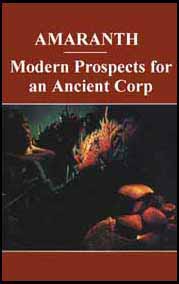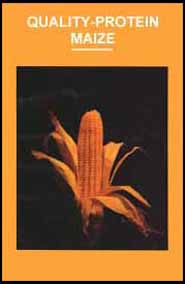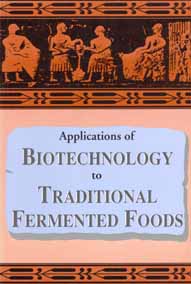Welcome
TOOLS FOR MORE AND BETTER FOOD
When heated, the tiny but tasty amaranth grain pops like popcorn. Its high-lysine protein perfectly complements that of the conventional cereals. It not only adds a nutty flavor to corn, wheat, rice, and other cereals but also lifts their nutritional strength. Moreover, beyond lysine the flavorful grain contributes vitamin E. It is in fact one of this antioxidant’s best sources.
Before the time of Cortez and Pizarro, grain amaranth supported the strapping societies of Aztec and Inca. Now this lost crop is returning to face the world again. It offers the promise of fortifying staples eaten worldwide, including those upon which the malnourished masses depend.
Amaranth: Modern Prospects for an Ancient Crop is a beautifully illustrated 78-page book that details the history and science behind this crop. Although published in 1984, it remains the best introduction to this promising dietary fortifier. Beyond botanical drawings and nutritional data, its pages highlight opportunities for advancing this neglected food towards its substantial, perhaps even stellar, future.
$5.00, Buy Now
Nutritional Powerhouse

While Africans starve, thousands of traditional food plants remain unappreciated, unimproved, and largely unstudied. Among them are more than 100 native grasses with edible seeds.
This book demonstrates the potential inherent in the most promising of Africa’s overlooked cereals. These traditional food plants can be found from Mauritania to Madagascar and are adapted to its pests, soils and climates. They have the potential to rise rapidly from nowhere and prevent hunger.
Lost Crops of Africa, Volume 1, Grains is a 380 page book describing the potentials of African rice, finger millet, fonio, pearl millet, sorghum, tef, and a dozen truly obscure native cereals. It also highlights innovations to help grain farmers, consumers, and malnourished babies make the most of them.
Increasing the use of, these forgotten food crops will boost productivity, improve nutrition, and raise farm income and rural economies using gene gems that are embedded across the hungry zone. Though much liked by the locals, they still need a little polish to bring out the true luster.
$10.00, Buy Now
Africa's Lost Grains

Milk Quality Corn

With the rise in population vast areas of marginal land must be brought under cultivation. And given the rise in atmospheric warmth, food production will have to become more tolerant to harsh and varying conditions. Triticale is an answer for both.
Produced by crossing a wheat “mother” with a rye “father,” this new crop expresses the qualities of its prodigious parents. Select types combine wheat's ability to make noodles, pastries, and breads with rye's disease resistance, drought tolerance, hardiness, and adaptability to sites that are hot, cold, wet, dry, hard, toxic, or weedy.
Triticale: A Promising Addition to the World's Cereal Grains is a beautifully illustrated 105-page book created by a panel of experts that summarizes the science behind this staple with huge promise for the new era about to burst upon us. Although published in 1989, it remains a great introduction to this crop that can transform marginal lands and sustain food production when the going gets too tough for today’s counterparts.
$5.00, Buy Now
Grains that Grow Where Others Fail

Traditional Fermented Foods
